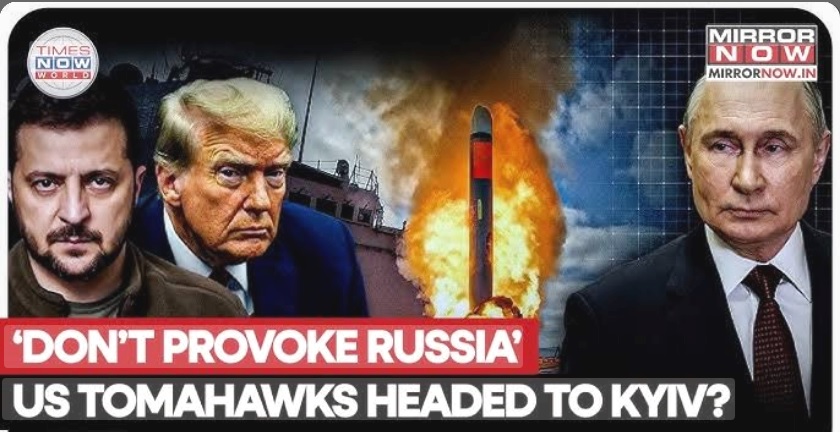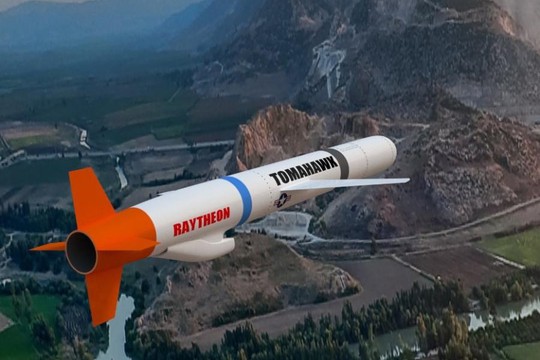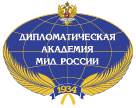Photo: defensetalks.com
Vance says Trump is considering supplying Ukraine with Tomahawk missiles.
Vice President JD Vance said in an interview that aired Sunday that President Trump was considering the possibility of supplying Ukraine with Tomahawk missiles, a step that would mark a significant escalation of the proxy war, as the missiles have a range of over 1,000 miles.
“You asked this question about Tomahawks. It’s something the president is going to make the final determination on. What the president is going to do is what’s in the best interest for the United States of America… I know that we’re having conversations this very minute about that issue,” Vance said in an appearance on Fox News Sunday.
It’s unclear how Ukraine would use the Tomahawk missiles if they were supplied, as they are designed to be fired by US Navy warships and submarines. Vadym Skibitskyi, the deputy head of Ukraine’s military intelligence agency, previously said that Ukraine lacks the naval infrastructure to use sea-launched Tomahawks.
The US could potentially provide Ukraine with its new ground-based Typhon missile launcher, which can fire Tomahawks and was developed after the US withdrew from the Intermediate-Range Nuclear Forces (INF) Treaty in 2019. The INF prohibited land-based missile systems with a range between 310 and 3,400 miles.
Vance didn’t address the risk of escalation that comes along with arming Ukraine with Tomahawk missiles, which are nuclear-capable. Moscow has previously made clear that US-backed missile strikes on its territory risk nuclear escalation, as it changed its nuclear doctrine to lower the threshold for the use of nuclear weapons after the Biden administration gave the green light for Ukraine to fire US-provided ATACMS missiles into Russia.
When asked about his previous opposition to the US arming Ukraine, the vice president pointed to the fact that the US is now having European countries fund the weapons shipments. However, last month, the administration announced a deal that will arm Ukraine with Extended Range Attack Munition (ERAM) air-launched missiles, which can hit targets up to 280 miles away, that will be partially funded by US military aid.
Tomahawks would put Moscow in range of Ukrainian missile strikes, and Vance’s comments came after Ukrainian Zelensky threatened that Kremlin officials could become targets if the war continues. “They have to know where the bomb shelters are,” Zelensky said in an interview with Axios. “They need it. If they will not stop the war, they will need it in any case.”
Russia, which hasn’t targeted Ukrainian leadership, has dismissed Zelensky’s threat. “Zelensky is trying to demonstrate to the Europeans, who now act as the breadwinners, that he is such a brave soldier,” said Kremlin spokesman Dmitry Peskov. “Meanwhile, the state of affairs at the front indicates the opposite. With every passing day, the situation for Ukraine is inexorably deteriorating.”

The US is poised to “sell” Tomahawk cruise missiles to Ukraine. US special envoy to Ukraine, retired general Keith Kellogg, says only the final decision has to be made. The US has already agreed, Kellogg said, for deep attacks on Russian territory, and only the release of the Tomahawks is pending, a decision left to US President Donald Trump.
While it may be regarded as an open and shut case by Washington, that does not take away the decision as reckless and escalatory. It puts the US on a direct collision-course with Russia, one that could lead to a war in Europe, Stephen Bryen, a former U.S. Deputy Under Secretary of Defense writes.
The Tomahawk cruise missile was originally intended to give the US nuclear triad a system that could successfully deliver nuclear weapons against the USSR. The idea was to create a system that was nearly impossible for Soviet air defenses to counter, after it became clear that conventional bombers, especially the B-52, could not operate from high altitude over Soviet territory.
Tomahawk was designed to fly “nap of the earth: missions. That is, once it was over Soviet airspace, it was designed to drop down to near tree-top heights and follow the contours of the earth, making timely detection difficult if not impossible.
Tomahawks came in three broad versions known as ALCMs (pronounced al-chems), GLCMs (pronounced Glick-ems) and SLCMs (pronounced Slick-ems). ALCMs are air launched cruise missiles typically carried by B-52 bombers. GLCMs are ground launched cruise missiles and SLCMS are sea-launched cruise missiles that can be carried by surface ships, mainly destroyers that today include the AEGIS air defense system, and submarines.
There are around 4,000 Tomahawks in the US inventory, most of them modernized Block IV and Block V.
Should the US deliver Tomahawks to Ukraine, the missiles would have to be operated either by US or UK technicians and would need to be supported by US overhead intelligence to select targets and program the missiles to hit them. Russia will regard the Tomahawks as a direct US intervention, and in fact there is no convenient way the US could deny it is operating the weapons. This means that if Trump authorizes the missiles, he also is directing the US military (or surrogate British) to use them against Russia.
The Russians are saying that Tomahawks for Ukraine are not a “game changer.” By this the Russians are pointing out that the ground war in Ukraine will not be changed by Tomahawks, which in fact are largely useless in conventional war scenarios.
The Tomahawks, however, are intended to knock out critically important Russian economic assets and, secondarily, missile and air bases in Russia.
One of the reasons why the US is seeking to try for a knock-out blow on Putin and Russia is Washington’s fear that Russia may launch a new, devastating offensive in Ukraine aimed at regime change there. The Russian strategy, until now, has been to break the Ukrainian army and force the current Ukrainian regime to step down. There are various reports coming out that say Russia is getting ready for a big push, but so far at least the reports cannot point to hard evidence this is so. Similarly, there are reports that Ukraine plans a big offensive of its own, likely aimed at Crimea. Where Ukraine would get the troops for any such operation remains unclear -especially since the troops would have to be pulled from the front lines elsewhere, exposing Ukraine’s army to Russian exploitation of the shift in forces.
Russia has kept some capabilities in its pocket, such as use of Oreshnik missiles, which are now being serially produced. The use of Tomahawks will put heavy pressure on Russia’s leaders to step up their operations in various ways and use weapons so far mostly kept out of the conflict. How far Russia would go when provoked directly by the United States should be carefully assessed in Washington before it embarks on a venture that could backfire and lead to a wider war in Europe.
Sergey Lavrov: The issue of possible US Tomahawk cruise missiles for Ukraine has not been resolved
Russian Foreign Minister Sergey Lavrov said that the issue of possible US Tomahawk cruise missiles for Ukraine has not been resolved.
"I think this is primarily the result of European pressure on Washington, and Washington wants to show that it takes into account the opinions of its allies. I don’t think we have seen the final decision," Lavrov told reporters on the sidelines of the 22nd annual meeting of the Valdai International Discussion Club, TASS quotes.
He also said he would be surprised if the United States considered Ukraine a responsible state to receive Tomahawks.
"The Americans don’t supply Tomahawks to everyone. Among Europeans, if I’m not mistaken, they supply them to Spain and the Netherlands; they’re somewhat wary of the rest. If they believe that Ukraine is a responsible nation that will use them responsibly, that would be surprising to me," he added.
Lavrov cited remarks by US officials, including Keith Kellogg, the US Presidential Special Envoy for Ukraine, and Vice President JD Vance. He noted that Kellogg has taken a strongly pro-Ukraine stance, even as President Donald Trump has described himself as a mediator who says Ukraine and Russia should resolve issues directly. Kellogg recently advised Ukraine to accept reality and de facto acknowledge that the territory is what it is now, and to stop worrying about it, drawing an analogy about the Baltic states’ status during the Soviet era and their later independence. Lavrov said such remarks contrast with Trump’s position and indicated that many speakers at the meeting were promoting the Ukrainian agenda.
He concluded by saying that the Kremlin is confident that even if Tomahawks are deployed in Ukraine, they will not change the military equation.
read more in our Telegram-channel https://t.me/The_International_Affairs

 11:21 01.10.2025 •
11:21 01.10.2025 •























